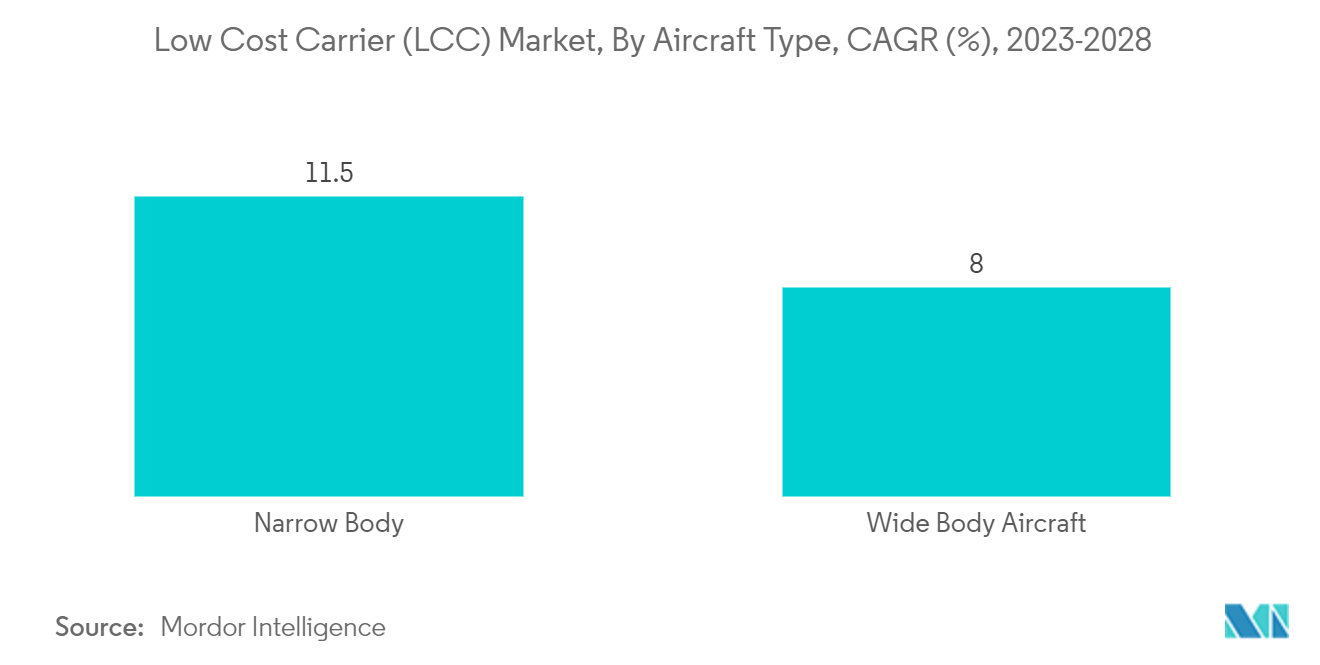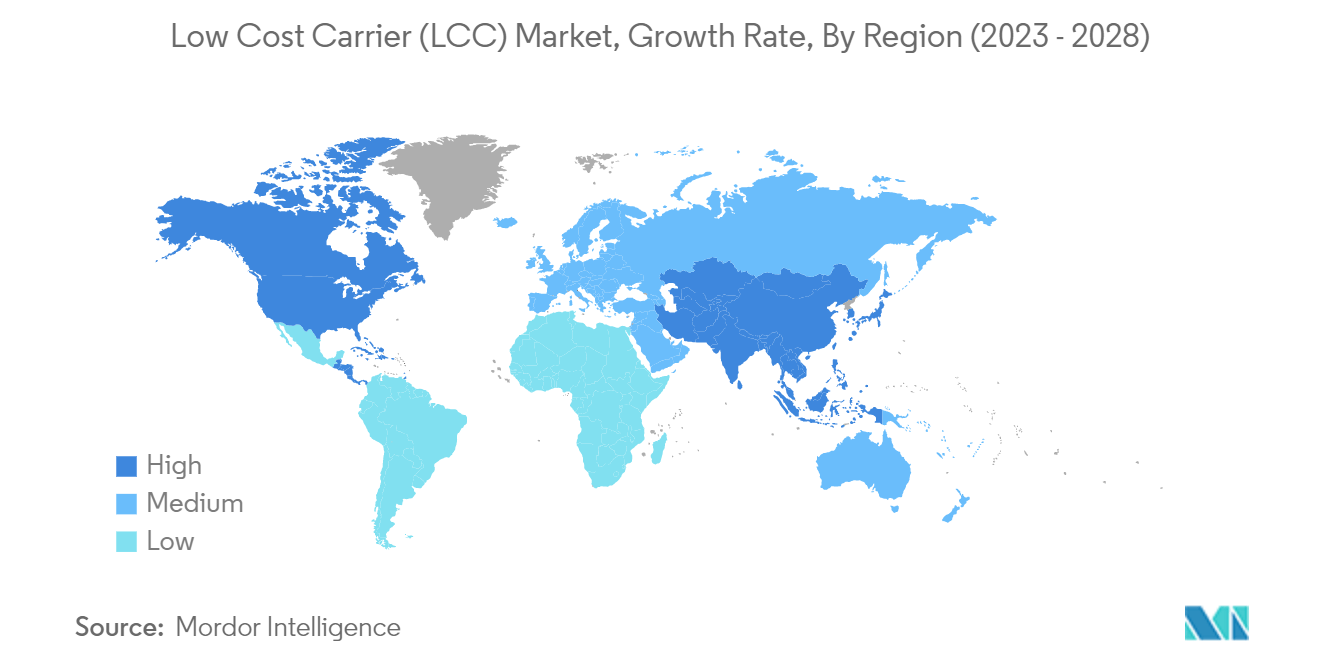Market Trends of Low-Cost Carrier (LCC) Industry
By Market Segmentation, Narrowbody Aircraft Type is Expected to Witness Significant Growth During the Forecast Period
- The narrow-body aircraft segment is expected to experience significant growth during the forecast period. Advanced capabilities, along with several other advantages such as low operating costs and fuel efficiency on short-haul routes, have made narrow-body aircraft the most preferred type among low-cost carriers worldwide.
- Currently, the Airbus A321 is the most efficient narrow-body aircraft and is expected to continue leading the market in the coming years. This growth can be attributed to factors such as a 10% cost reduction in A321 classic models and a 20% cost reduction in A321 Neo models.
- Furthermore, the low-cost carrier business model's success has generated enormous demand for newer-generation narrow-body aircraft due to their advantages. Technological advancements in newer-generation narrow-body aircraft are enabling them to fly longer distances. The Boeing B737 and Airbus A320 are two of the most popular narrow-body aircraft. In December 2022, Air India announced a deal to order over 200 Boeing aircraft, including 190 narrow-body 737 MAX aircraft, as part of a historic fleet expansion split with Airbus.
- The demand for narrow-body aircraft is expected to recover faster than that of wide-body aircraft, as domestic demand is projected to return to pre-COVID-19 levels earlier than international passenger demand. Additionally, the return of the 737 MAX to service in late 2020 will further drive the growth of the narrow-body segment. Therefore, these factors will contribute to the narrow-body aircraft segment's growth during the forecast period.

The Asia-Pacific Region Is Expected To Witness Significant Growth During The Forecast Period
- The Asia Pacific region is anticipated to experience substantial growth during the forecast period, driven by significant changes in the air travel market over the past few decades. Factors such as governmental changes, policy modifications, economic growth, and rising incomes have contributed to the growth of air travel in the region. However, the rise of low-cost carriers has played a major role in this growth by offering cheaper fares to access more potential customers.
- The increasing air passenger traffic in the region, coupled with growing aviation operations and the acquisition of new and technologically advanced aircraft to cater to customer needs, will be the main reason for the growth of low-cost carriers in the region. In recent years, low-cost carriers in the Asia-Pacific region have witnessed significant growth owing to the ASEAN Open Sky agreements. With a vast population in the region and a significant percentage of it having enough disposable income to make air travel viable, well-run low-cost airlines have immense business opportunities to find success in the region. According to Aviation Business News, the Asia Pacific region is expected to account for approximately 40 percent of future airliner production.
- Additionally, Air Asia announced in September 2022 that they were named Asia's leading low-cost airline cabin crew for the sixth consecutive year and Asia's leading low-cost airline for the seventh year in a row at the 29th World Travel Awards. The Malaysian airline emerged as the winner in these categories after receiving the most votes from industry players, consumers, media, and travel professionals from all across the region. Such advancements are expected to lead to enormous growth in the Asia-Pacific low-cost carrier market during the forecast period.

